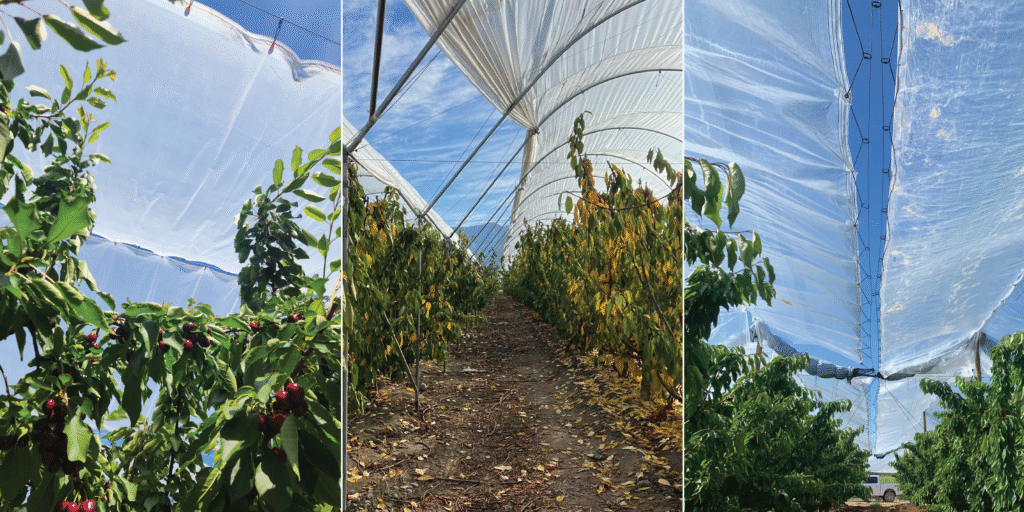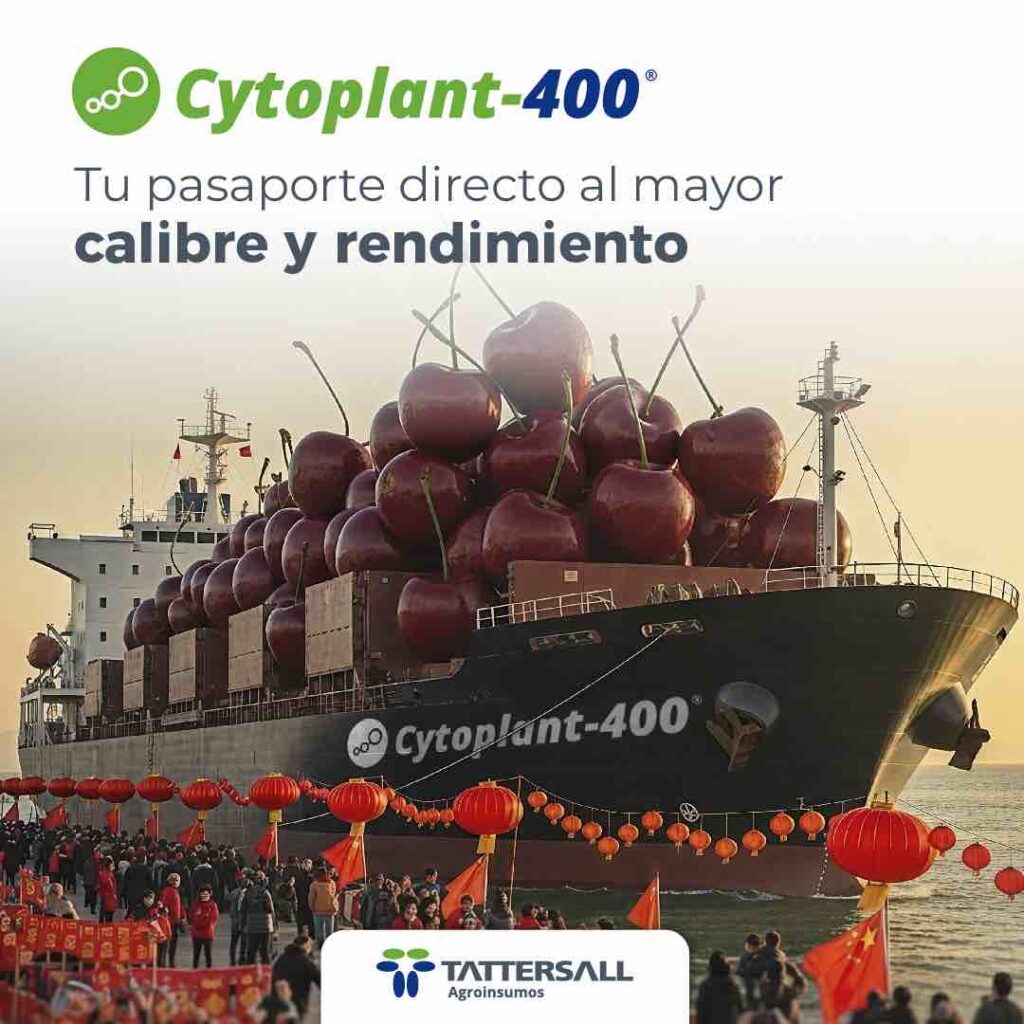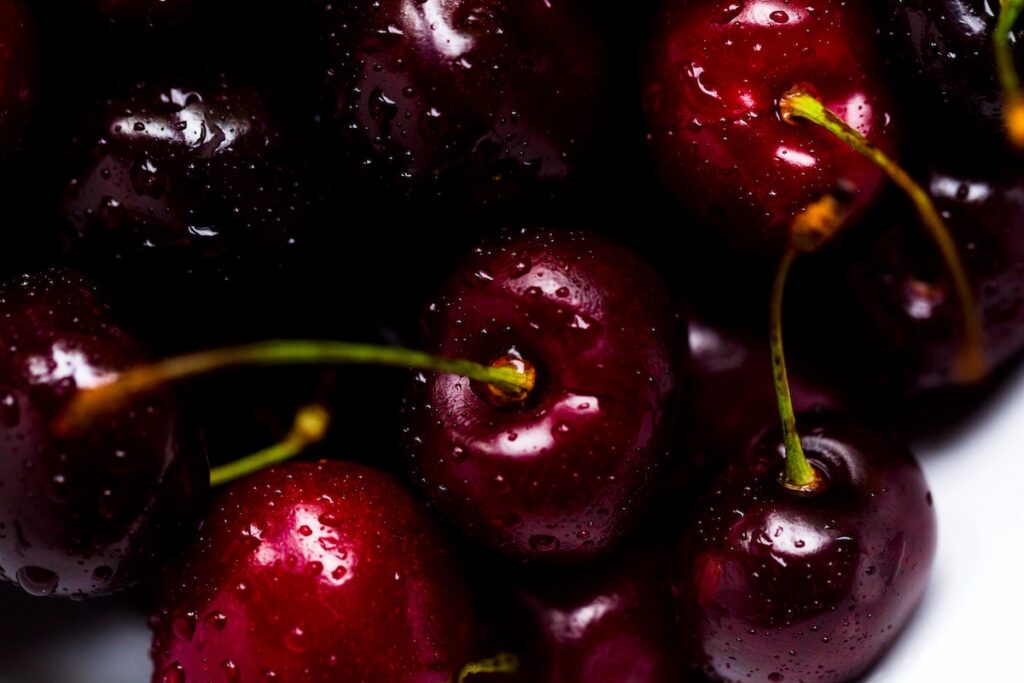The following Agroclimatological Report has two objectives:
1.- Analysis of agroclimatic conditions during May.
2.- Projections for the month of June.
Development of El Niño/La Niña Cold conditions and heavy rains characterized the month of May.
Rainfall in Curicó
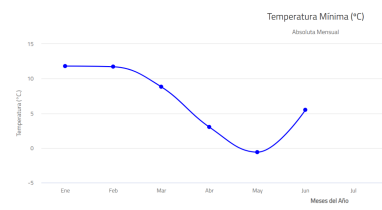

May was characterized by very cold conditions, especially the occurrence of frost, whose lowest point was -0.6° C. The presence of cold air masses contributed to a total of 339.0 cold hours for the entire month. If the La Niña event develops, as estimated by the models, June could probably add up to twice this value. Thermal cold alternated with rain, which occurred during the first and second half of the month. Some of them were very intense in the short term. May added 72.8 millimeters of precipitation, which leaves Curicó with a total to date of 124.8 mm, with the normal being 186.1 mm; the deficit is 32.9%.
It is expected that during June, at the end of the El Niño event, the rains will manage to reduce this percentage and the spring irrigation season will not present problems. In fact, during the first half of the month several frontal systems will contribute with rain and snow. This is positive, taking into account the arrival of the cold event of La Niña for the second half of the month.
The warm El Niño event 2024 indicates trends towards a neutral-cold phase.
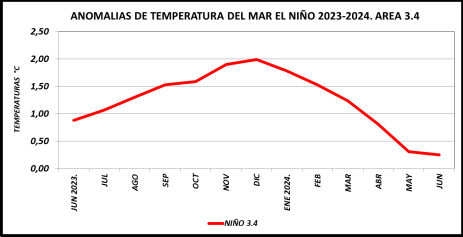
According to the data in the graph, corresponding to the sea surface temperature in the Niño 3.4 area, located in the central equatorial zone of the Pacific Ocean, the warm El Niño event indicates a continuous decrease in its temperatures starting in April 2024.
At its peak, it reached 1.99° C above the normal average in December 2023. During May, this variation registered only 0.31° C and in June it is indicating 0.19° C above normal. Although temperatures are still showing positive, dynamic and statistical models indicate that we are entering the neutral phase. This is defined by the fact that during July, and probably August, the ocean-atmosphere system will enter the cold La Niña phase, which will probably extend until spring 2025 or until the end of winter 2026.
The probability of a La Niña event starting is 79% during July; 78% for August and 83% in September. The above indicates that the agrometeorological conditions will change significantly during the second half of the year: a drop in monthly rainfall-snow levels; a greater occurrence of cold days; persistence of winter frosts, both in intensity below zero and in temporal extension in hours. A positive element is the certainty of accumulating normal or above normal amounts of Cold Hours necessary for the phenological development of cherries.





